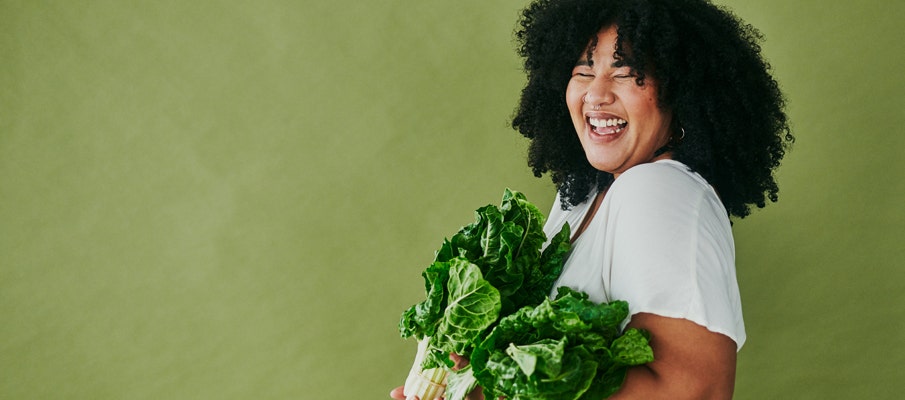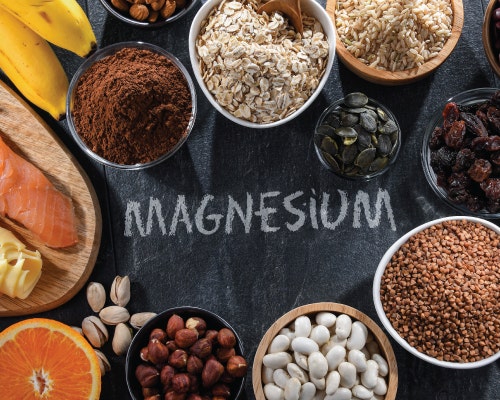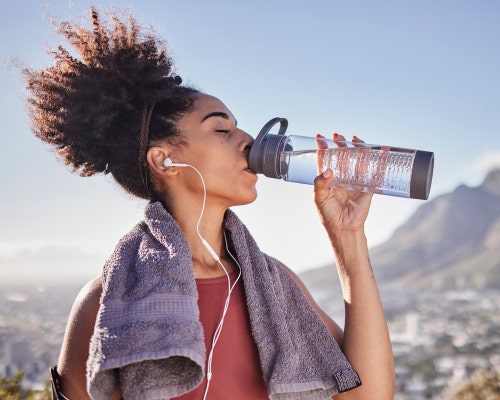You May Be Missing This Small but Mighty Mineral: Iron
- 4/13/23


Iron is a trace mineral that your body requires to function well. Many people know about the connection between iron and healthy levels of oxygen in your blood, but iron is also important for many other bodily functions.
Below we will discuss all things related to iron, including why it’s important, when you may need to get more iron in your diet, and the best sources of iron.
Why is Iron Important?
The most well-known role of iron is to help make hemoglobin, a protein in red blood cells that helps transport oxygen throughout your body. However, iron does so much more.
Iron is necessary for the synthesis of myoglobin to provide oxygen to the muscles. It is a component of hundreds of proteins and enzymes, such as those needed for cell growth and function, energy production, immune function, and brain development.
Why You May Need More Iron
The Recommended Dietary Allowances for iron differ depending on your gender, age, and stage of life.
Males ages 19 or older need 8 mg of iron daily to meet their needs. For females 19 years or older who menstruate, it is recommended to have an intake of 18 mg of iron daily. During pregnancy, these needs increase to 27 mg per day. During lactation, iron needs decrease to 9 mg/day, and menopause (typically occurring by age 51+) decreases iron needs to only 8 mg per day.
In addition to your daily needs, you may need more iron depending on your lifestyle or state of health. Chronic conditions that increase inflammation can increase how much iron you need daily. Athletes, especially those involved with endurance sports, have increased iron needs due to the increased wear and tear on their bodies.
How to Get More Iron in Your Diet
Iron deficiency is very common, affecting approximately 30% of the population globally. In the United States, the prevalence of iron deficiency is low in men (about 2%), but iron deficiency rates are higher in non-pregnant (between 9-16%) and pregnant women (approximately 18%). Many people may not be getting enough iron in their diet to stay healthy. Optimize your iron intake through food, vitamins, and certain eating habits to avoid iron deficiency.
What Foods are High In Iron?
Iron is present in both animal-based and plant-based sources. Respectively, these are known as heme iron and non-heme iron. Here are some foods that are highest in iron that you can incorporate into your diet.
Animal Sources of Iron
- Oysters
- Beef
- Mussels
- Liver (beef, pork, or chicken)
- Duck
- Sardines
- Shellfish
Plant-Based Sources of Iron
- Fortified breakfast cereal
- Beans (white, lima, red)
- Lentils
- Spinach
- Soybeans/Tofu
- Bitter cocoa powder
How to Maximize Your Iron Absorption
To get the most out of your iron, whether it comes from your food or from a multivitamin with minerals supplement that contains iron, here are a few tips you can consider:
- If tolerated, try taking your iron on an empty stomach
- Avoid eating iron-rich foods with beverages that are high in oxalates, such as red wine, coffee, or tea
- Combine high-iron foods with acidic foods or foods that are high in vitamin C, which is the acid that helps boost iron absorption
- Try to separate your iron intake from foods that are high in calcium, as this can reduce absorption
- Cooking in a cast-iron skillet can help increase the iron in your meals
- Moderate doses of iron taken every other day may help increase how well iron is absorbed
Sometimes, it can still be difficult to meet your daily iron needs, even when adding iron-containing foods to your diet. A supplement can help fill in the gaps in your diet to get the nutrients you need. Garden of Life’s Vitamin Code Raw Iron Capsules uses iron sourced from whole foods that are vegan-friendly and easy on your stomach. In addition to being stomach-friendly, this supplement is Non-GMO Verified, Certified Vegan, and NSF Gluten-Free Certified.
References
-
Iron Fact Sheet for Health Professionals. National Institutes of Health Office of Dietary Supplements. https://ods.od.nih.gov/factsheets/Iron-HealthProfessional/. Accessed February 16, 2023.
-
Madu AJ, Ughasoro MD. Anaemia of Chronic Disease: An In-Depth Review. Med Princ Pract. 2017;26(1):1-9. doi:10.1159/000452104
-
Sim M, Garvican-Lewis LA, Cox GR, et al. Iron considerations for the athlete: a narrative review. Eur J Appl Physiol. 2019;119(7):1463-1478. doi:10.1007/s00421-019-04157-y
-
Kumar A, Sharma E, Marley A, Samaan MA, Brookes MJ. Iron deficiency anaemia: pathophysiology, assessment, practical management. BMJ Open Gastroenterol. 2022;9(1):e000759. doi:10.1136/bmjgast-2021-000759
-
Killip S, Bennett JM, Chambers MD. Iron deficiency anemia [published correction appears in Am Fam Physician. 2008 Oct 15;78(8):914]. Am Fam Physician. 2007;75(5):671-678.
-
Sekhar DL, Kunselman AR, Chuang CH, Paul IM. Optimizing hemoglobin thresholds for detection of iron deficiency among reproductive-age women in the United States. Transl Res. 2017;180:68-76. doi:10.1016/j.trsl.2016.08.003
-
McDonagh M, Cantor A, Bougatsos C, Dana T, Blazina I. Routine Iron Supplementation and Screening for Iron Deficiency Anemia in Pregnant Women: A Systematic Review to Update the U.S. Preventive Services Task Force Recommendation. Rockville (MD): Agency for Healthcare Research and Quality (US); March 2015.
-
2020-2025 Dietary Guidelines and Online Materials: Food Sources of Iron. U.S. Department of Agriculture, Department of Health and Human Services. n.d. Accessed February 16, 2023. https://www.dietaryguidelines.gov/resources/2020-2025-dietary-guidelines-online-materials/food-sources-select-nutrients/food-1





